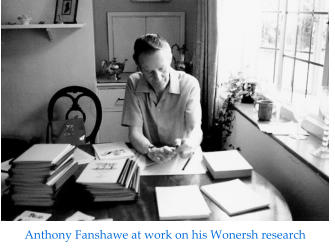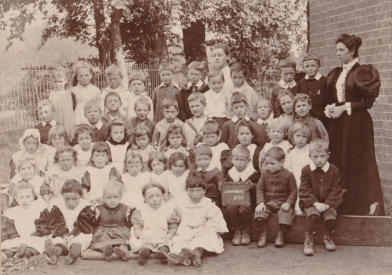© Wonersh History Society - www.wonershhistory.co.uk
WONERSH
HISTORY SOCIETY
The people of Wonersh have been employed in a variety
of trades and professions. There have been weavers,
writers, printers, stonemasons, tanners, shoemakers,
judges, politicians, shopkeepers, gamekeepers,
brickmakers and farmers.
The writer and traveller Claudia Parsons became the
first person to circumnavigate the world by car in 1938.
In 1739 Judge Sir William Chappel passed sentence on
the highwayman Dick Turpin.
In Victorian Britain, Caroline Norton, a passionate
campaigner for women’s rights, was instrumental in the
passing of the Custody of Infants Act and Matrimonial
Causes Act.
During WW2 Constance Babbington Smith was awarded
an MBE and the US Legion of Merit for her work in air
photo intelligence.
It all began
when
in
1966,
a
year
before
he
moved
to
Wonersh,
the
late
Anthony
Fanshawe
started
his
research
into
the
village.
He
interviewed
residents
and
people
who
had
moved
away
and
he
visited
Public
Record
Offices.
In
all
he
spent
twenty-four
years
collecting
a
vast
amount
of
material.
On
Anthony’s
death,
John-Paul
Marix-Evans
of
Great
Tangley
and
Fraser
Scott
of
Woodyers
(respectively
our
first
Chairman
and
Secretary)
cleared
his
study
and
both
left
with
their
cars
loaded
with
books,
pictures,
maps
and
documents.
It’s
this
collection
that
formed
the
basis
of
the
Wonersh
History
Society
which
was
founded
in
1992 and since then the archive has continued to grow.

COMMITTEE MEMBERS:
Dennis Cruickshank
Chairman & Archivist
Graham Healy
Treasurer & Membership
Douglas Sudbury
Barry Clifford
Archivist
Richard Bawden
Publicity
Frances Sudbury
Bulletin Editor
FROM THE ARCHIVES
For just £10 a year (£15 for a family) you can join the History Society and have access to more photographs like this along with videos, bulletins and, in the not too distant future, books. Lawnsmead Hall was built in 1890 to house Lawnsmead Infant School. One pupil was James Redman whose father worked at the tannery. Although the school catered for ages 5-8, James joined the school when he was 4 so that his mother could go to work at one of the two laundries in the village. They lived first at No. 20 and then No. 13 Lawnsmead. In the early 1800s, working class children went to small private Dame Schools often run by elderly women who taught them to read, write and sew. The women, sometimes illiterate themselves, were often little more than childminders who took as many children as they could cram into what was often their front room. The Dame School in Wonersh was the ground floor of Little Stone Cottage and Stone Cottage opposite the Grantley Arms.
Lawnsmead School 1898
Contact Us


















